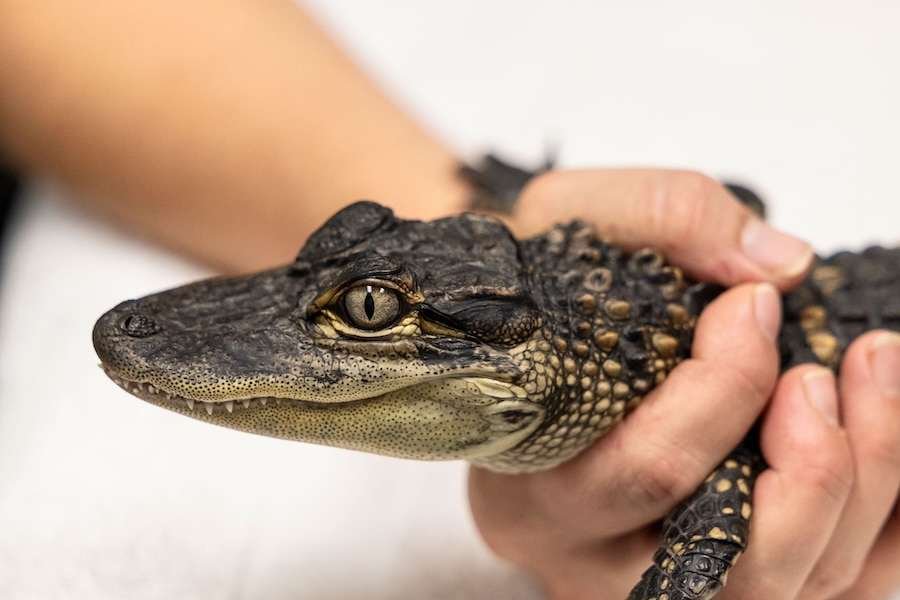In a new study, scientists have detected high levels of mercury contamination in alligators from the Okefenokee Swamp in southeastern Georgia. The contamination in the alligators could be an indicator of more widespread heavy metal contamination in the region, which could be harmful to other wildlife, and ultimately humans.
“Alligators are very ancient creatures, and we can look at them in these areas as an indicator of what else might be happening in the ecosystem,” Kristen Zemaitis, lead author of the study and a graduate of the Odum School of Ecology at University of Georgia, said in a statement. “Studying them can relate to many different things in the food web.”
Scientists analyzed blood samples and dietary habits of 133 alligators from three different sites: Okefenokee Swamp, Georgia; Jekyll Island, Georgia; and Yawkey Wildlife Center, South Carolina. While the team found mercury in alligators from all three sites, the amount of mercury in alligators from the Okefenokee Swamp was up to eight times higher compared to the alligators along the coast. They published their findings in Environmental Toxicology and Chemistry.
Older alligators also had higher levels of mercury, which the researchers explained could be both because of the longer time the mercury could spend accumulating as well as an increase in the volume of prey — which are likely also contaminated with mercury — that the alligators eat as they grow.
But even young alligators were found to contain mercury, as “Mothers are passing toxins and heavy metals into the egg yolks during reproduction,” Zemaitis said.

A new study found that smaller alligators and hatchlings could inherit high levels of mercury from their mothers. Chamberlain Smith / University of Georgia
Because Okefenokee Swamp shares water with the Suwannee and St. Marys rivers, the researchers warned that mercury levels found in alligators, at the top of the food chain, likely means local fish also contain mercury.
“Mercury is a neurotoxin that is very lethal to organisms,” Jeb Byers, co-author of the study and a professor at the Odum School, said in a statement. “If it builds up, it moves through the food web and creates the perfect storm. That’s what we have in the Okefenokee.”
That could also pose a threat for people who hunt or fish in this area, especially if they are consuming their catches.
“Mercury contamination can be a high concern for the people who can be consuming a lot of fish or game species from the rivers, swamps or oceans that have high mercury,” Zemaitis explained. “In any given ecosystem, there are some organisms that can tolerate only very little amounts of mercury, which can result in neurological issues, reproductive issues and eventually death.”
Following this study, Zemaitis hopes to do a deeper investigation into the source of this mercury pollution, how it spreads throughout ecosystems and how it is affecting other wildlife.
“Now that we know this about one of the apex predators in these systems, we wonder what else is being affected?” she said.
The post High Levels of Mercury Found in Alligators in Okefenokee Swamp, Georgia appeared first on EcoWatch.














